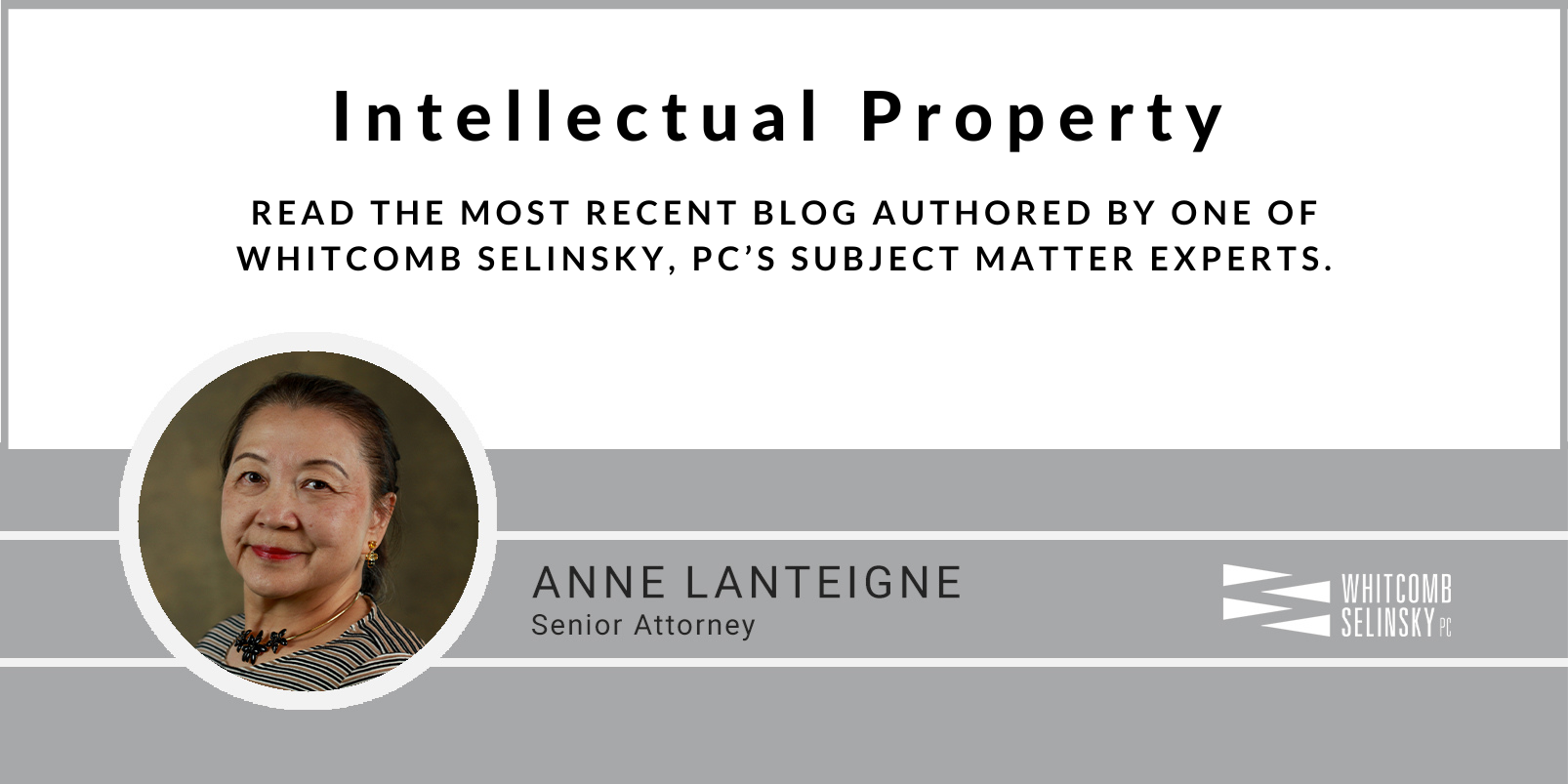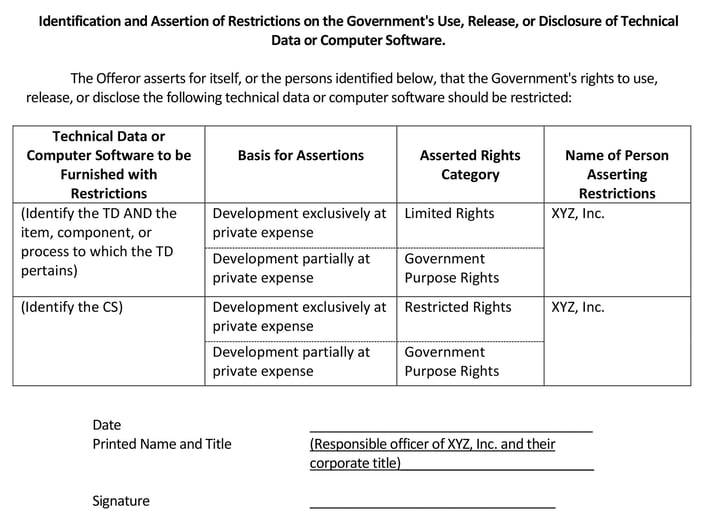3 min read
Contractor’s Assertions of Rights Restrictions in Government Contracts
![]() Anne Lanteigne
:
December 19, 2022
Anne Lanteigne
:
December 19, 2022

When a contractor asserts restrictions on the Government’s rights in certain required-deliverable technical data (TD) and computer software (CS), the assertions of rights state that the Government has less than unlimited rights in those TD/CS and cite the basis for the asserted restrictions. This gives the Government notification as to what rights it would have in specific TD/CS delivered by the contractor, determine whether it has apparent reasons for questioning the assertions, and whether it should negotiate for additional or different rights in the TD/CS. When an assertions list is in an acceptable format and presents no grounds for the Government to question the assertions, the list is incorporated into the contract as an attachment. However, such incorporation into the contract does not mean the Government necessarily agrees with the validity of the contractor’s assertions. It only means the Government acknowledges that the contractor is making the assertions. The Government retains the right to challenge the validity of these assertions later, though it must do so within a specific time. These challenge procedures will be addressed in a future blog.
The following is a typical format for an assertions list for a Department of Defense (DoD) contract:

If the offeror or the contractor asserts “specifically negotiated license rights” for any TD or CS, it must submit the relevant license for the Government to review and either accept or negotiate for different terms.
It is entirely up to the contractor to select the level (i.e., system, sub-system, component, sub-component, routine, and/or sub-routine) at which to assert restrictions, but the level chosen should be one where the contractor can substantiate its assertions if or when the Government asks for verifying documentation. The contractor is advised to assert its rights at the lowest practicable, segregable level it can substantiate. Therefore, it is vital to identify the TD/CS with specificity and choose the level where the contractor can provide relevant substantiating documentation to justify the basis for the asserted rights category. If not, the contractor may end up granting broader rights than intended and risk losing the restriction right it might otherwise have had, had it asserted the restrictions at the proper level, along with the loss of potential opportunity to negotiate a license for any additional rights the Government may need.
For example, the contractor may assert Limited Rights in TD pertaining to System X that it claims has been developed exclusively at private expense. If the Government desires to obtain additional rights beyond Limited Rights in the TD, it will negotiate with the contractor for reasonable terms. These terms may very well include royalty payments. However, suppose the contractor cannot prove that System X, in its entirety (i.e., all subsystems and/or components), has been developed exclusively at private expense. In that case, it may lose its Limited Rights claim. Thus, even if one component of the many that comprise System X has been developed with government funding, the contractor’s claim of Limited Rights in the system (i.e., the right’s level at which it chose to assert) would not be supported. This can result in the Government getting unlimited rights in the TD pertaining to the entire system.
An offeror submits its assertions list as a part of its offer in response to the required deliverable TD/CS set forth in the solicitation. Failure to submit, complete, or sign the above notification and identification of TD/CS with its offer may render the offer ineligible for the award. Furthermore, the contractor will be obligated to deliver with unlimited rights for the Government any required deliverable on which it had made no assertions of restrictions. Sometimes, the Government forgets to attach the assertions list to the contract; therefore, the contractor should be vigilant in ensuring its assertions list is, in fact, attached to the contract.
The Defense Federal Acquisition Regulation Supplement (DFARS) does allow the submission of assertions after the contract has been awarded; however, the circumstances allowing such post-award assertions are narrow, and the contractor must provide specific proof sufficient to convince the Contracting Officer it meets the extra conditions outlined in the regulations for such post-award addition.
The prime contractor is responsible for making assertions of TD/CS rights restrictions on its behalf and on behalf of its subcontractors/suppliers. The contractor and higher-tier subcontractors are admonished not to use their power to award contracts as economic leverage to obtain rights in TD/CS from their subcontractors/suppliers. Additionally, the contractor cannot use its obligation to recognize and protect subcontractor/supplier rights in TD/CS as an excuse for failing to satisfy its contractual obligation to the Government. If the contractor is obligated to deliver a certain level of rights in TD/CS to the Government and such rights are owned by its subcontractor, the contractor must obtain a license from the owner that would allow the contractor to deliver the required rights to the Government.
For more information on how to protect your TD/CS rights and/or how to create an Assertions of Restrictions for your TD/CS, contact us at Whitcomb Selinsky, PC. Our skilled Intellectual Property and Government Contracting attorneys will review your contract and help ensure your assertions are adequately documented and founded.



